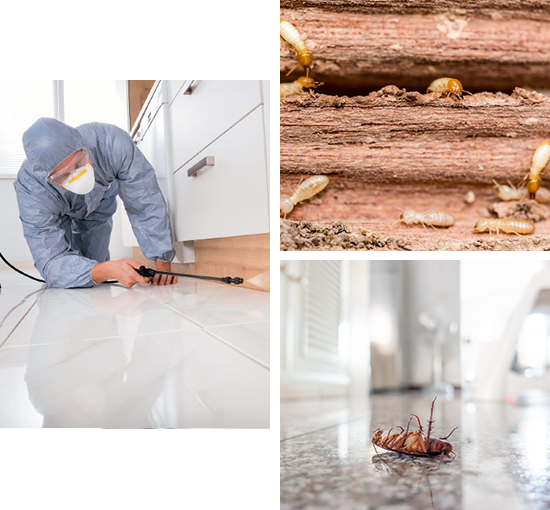
An anti-termite treatment is a pre-and post-construction chemical process that
protects a structure against subterranean termites by treating the soil, masonry, wood, and electrical fixtures. In this, we’ll include about anti-termite chemicals, pre- and post-construction treatment, preventative methods, safety, and common products used for home treatment.
Anti-termite treatment is a chemical treatment performed on ground, brickwork, wood, and electrical fixtures before and after construction to offer a chemical barrier against subterranean termites. For the most part, subterranean termite treatment is accomplished by the use of liquid pesticide sprays that are injected or drenched into the soil.

This treatment is to take to treat a building for termites before construction. It has 10 years’ Service Warranty. To prevent termites from colonising in the future, it is standard practice to apply an anti-termite chemical to the sides and bottom surface of the foundation trenches and pits at a rate of 5 L per square metre of the surface area during the excavation process.
Before it can be used as flooring, the earth’s surface must first be cleared of any debris made of wood or other waste.
The needed height should be applied evenly throughout the whole surface. The distance between each surface hole is 15 centimetres, and it has a depth of 30 centimetres
Adding water to the chemical will result in the production of an emulsion that has the appropriate concentration (as specified in the manufacturer’s specification).
The holes will have this emulsion poured into them using pouring jars, and the surface will be sprayed with it using pressure pumps and sprayers. It is permitted for the chemical to completely soak through the perforations in the screen.

Post construction termite treatment can be carried out after the building has been completed and is ready to be occupied, or even after it has been occupied. The floor will be gently drilled with a drill to allow chemicals to be injected, then covered again in nearly the same state as before it was drilling.
This method is carried out when these pest intruders attack through surface soil and spread throughout the building to get food. Termites will rise from the ground and cause damage to all wood furniture, doors, wood frames, and others.
Anti-termite post-construction in buildings that have been attacked by termites is the right step in preventing damage to your building. If the termites are allowed to attack continuously throughout the year, it is not impossible that you have to rebuild your building.
The first stage of a thorough inspection of buildings affected by termites. This is important to determine the point and path of termite attack, and to determine the use of termite control methods in the building.
Based on the inspection we concluded the specified services; -
The pest / pests identified was: Subterranean Termites
The level of infestation observed was: Severe
Subsequent to our discussions and based on our survey of your premises, please find enclosed a proposal and quotation for pest control service intervention.